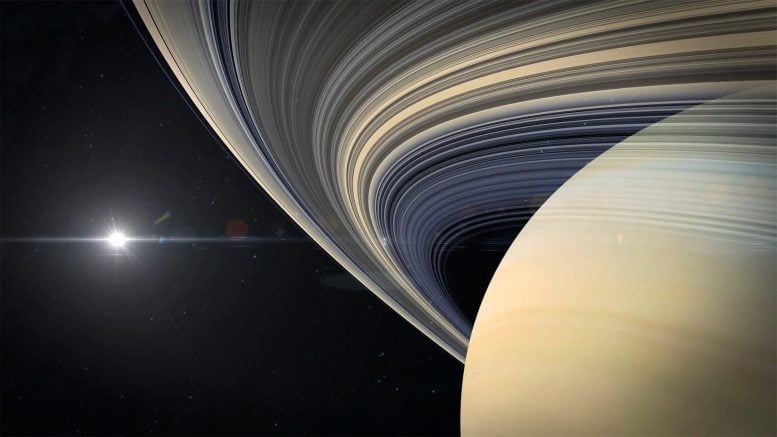
Illustration of Saturn and its rings. All of the outer gas giant planets — Jupiter, Saturn, Neptune, and Uranus — have rings around them.
Planets are surrounded by rings because they are made up of particles that orbit the planet. These particles can be made up of a variety of materials, such as rock, ice, and dust. The rings are formed when objects in the planet’s surrounding space, such as comets, asteroids, or moons, break up and their debris is pulled into the planet’s gravitational field. The particles then begin to orbit the planet and form a ring. The size and shape of the rings can vary depending on the size and composition of the particles, as well as the planet’s gravitational pull. Some planets, such as Saturn, are known for their large and distinctive ring systems, while others, such as Mars, have much smaller and less noticeable rings.
Saturn was thought to be the only planet in our solar system with rings for a very long time. The rings around Saturn were discovered nearly 400 years ago by the famous astronomer, Galileo Galilei. He used a very simple telescope that he constructed himself from lenses and pointed it at the planets in the night sky. One of the first objects he looked at was Saturn. At first, he thought that Saturn had two large moons on either side of the planet because his telescope wasn’t very good and only produced very blurry images.
Since then, astronomers have used bigger and better telescopes to find rings around all of the outer gas giant planets: Jupiter, Saturn, Neptune, and Uranus. These planets, unlike others in our system, consist largely of gas.
Although we’re not exactly sure how the rings work or how they formed, there are a few theories.
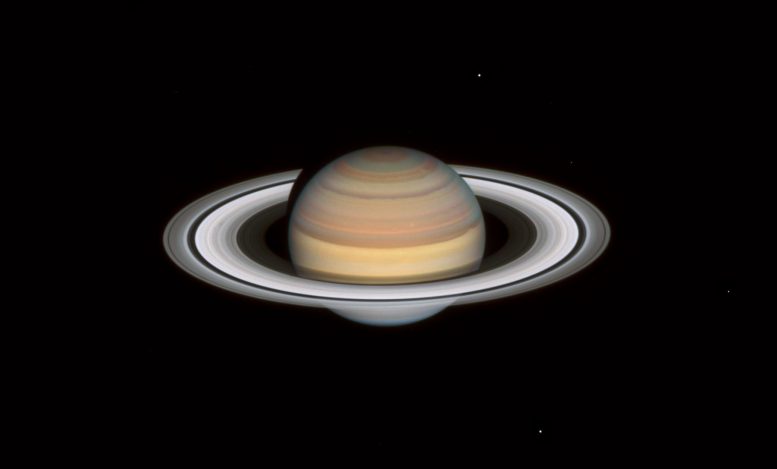
Hubble’s 2021 look at Saturn shows rapid and extreme color changes in the bands of the planet’s northern hemisphere. Credit: NASA, ESA, A. Simon (NASA-GSFC), and M. H. Wong (UC Berkeley); Image Processing: A. Pagan (STScI)
Different theories
The first theory states that the rings formed at the same time as the planet. Some particles of gas and dust that the planets are made of were too far away from the core of the planet and could not be smushed together by gravity. They remained behind to form the ring system.
According to the second theory, which is my personal favorite, the rings were formed when two of the moons of the planet, which had formed at the same time as the planet, somehow got disturbed in their orbits and eventually collided with each other. The stuff that was left behind in this huge crash could not come together again to form a new moon. Instead, it spread out into the ring systems we see today.
Since we don’t have definitive answers yet, we keep exploring and testing different theories.
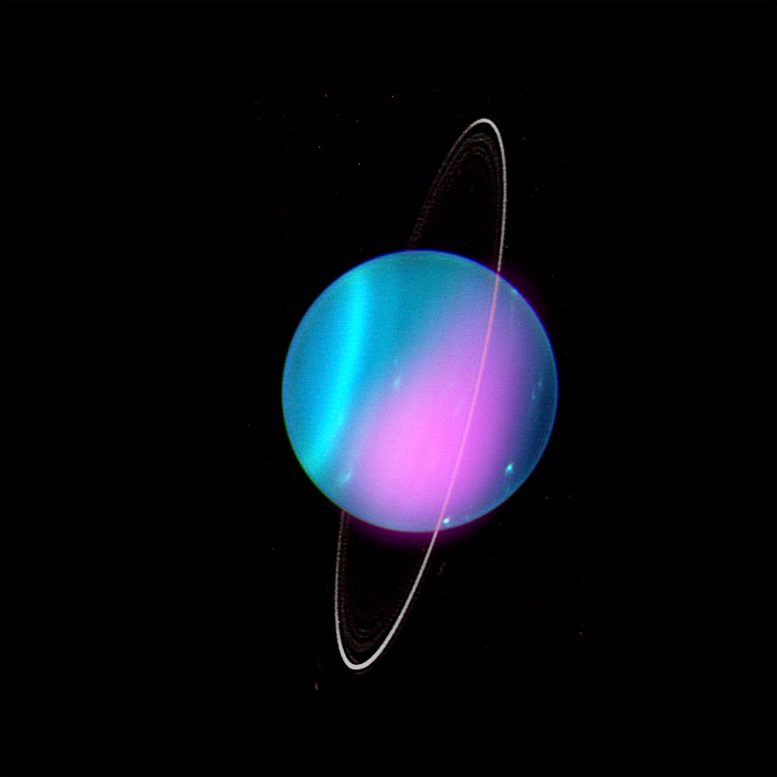
Composite Uranus image with X-ray data from Chandra taken in 2002 and optical data from the Keck telescope in Hawaii. Credit: X-ray: NASA/CXO/University College London/W. Dunn et al; Optical: W.M. Keck Observatory
What we do know is that the rings around the various planets are all slightly different from one another, but they all share some characteristics too.
First, they are all much wider than they are thick. The rings of Saturn, for example, are about 175,000 miles (282,000 kilometers) wide (stretching away from the planet) but only 650 feet (200 meters) thick. That’s like having a normal pancake on your plate for breakfast that is 9 miles (14 km) wide.
The other thing that all rings systems share is that they are all made of small particles of ice and rock. The smallest of these particles are no bigger than dust grains, while the largest of the particles are about 65 feet (20 meters) in diameter – about the size of a school hall. All the rings around the planets also contain gaps that are sometimes many miles wide and at first, nobody could figure out why. We later learned that the gaps were caused by small moons that had gobbled up all the material in that particular part of the ring system.
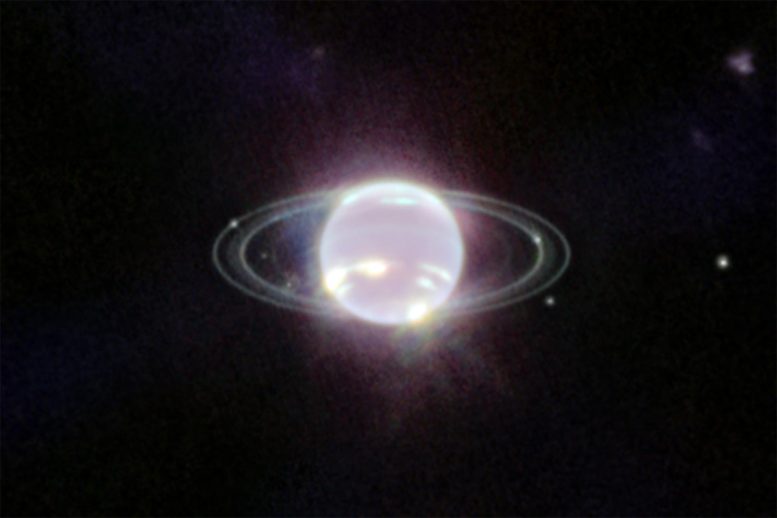
Webb’s Near-Infrared Camera (NIRCam) image of Neptune, taken on July 12, 2022, brings the planet’s rings into full focus for the first time in more than three decades. Credit: Image: NASA, ESA, CSA, STScI, Image Processing: Joseph DePasquale (STScI)
The biggest difference between the rings of Saturn and the other gas giant planets is that the particles that make up the rings of Saturn are very good at reflecting the light from the sun back towards the Earth. That means they appear to be very bright, which is why we can see the rings from Earth using a normal telescope. The extremely large number of particles trapped in the rings of Saturn also make the rings much bigger and wider; that’s another reason they’re easier to see than the rings of the other gas giant planets.
The particles that make up the rings of Uranus and Neptune contain elements that were darkened by the sun. These dark particles look very similar to pieces of coal or charcoal. This makes them much more difficult to see because they don’t reflect as much of the sun’s light back to us.
New discoveries
This is an exciting time for astronomy. More and more satellites and space probes are being launched from all over the world, which allows us to investigate the outer planets of our solar system. That means astronomers will have the chance to study these rings – and one day, hopefully, we’ll be able to answer all of your questions and more.
Written by Dr. Rudi Kuhn, SALT Astronomer, South African Astronomical Observatory.
This article was first published in The Conversation.![]()

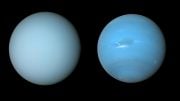
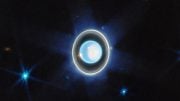
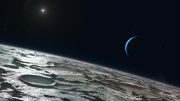
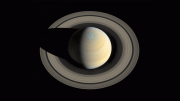
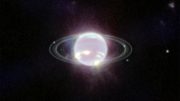
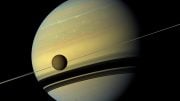
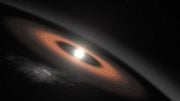
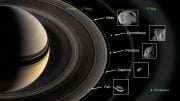
all this article did was try to explain what the stuff in the rings consists of and where it comes from. it makes ZAERO attempt to explain why it formed a ring, instead of a big cloud surrounding the planet. the whole point of the title was to explain why it all formed a ring